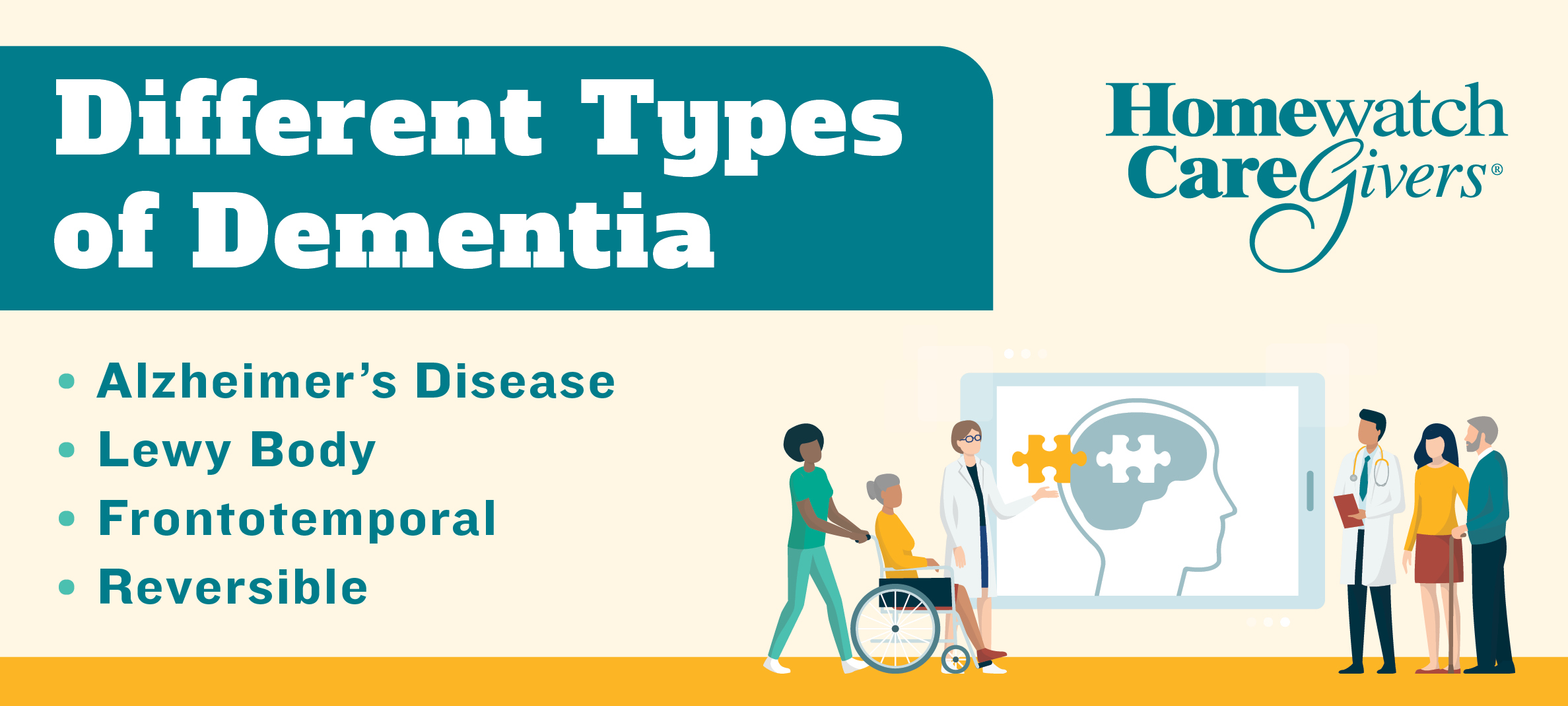Dementia is not the same as Alzheimer’s disease, but Alzheimer’s is the most common form of dementia. Dementia is not a disease but a term to describe a group of symptoms.
When a loved one begins to show signs of memory loss, assumptions might be made that they have dementia or that it’s just a normal part of aging. However, there are different causes of the symptoms of dementia, and dementia might be one symptom of another illness.
Alzheimer’s Disease
Alzheimer’s disease, a degenerative brain disease, is the most common form of dementia, and there is currently no cure. The causes of Alzheimer’s disease are still being studied and one factor is genetic, but that does not mean people who don’t have the inherited gene cannot still get the disease.
The 10 early signs of Alzheimer’s disease, according to the Alzheimer’s Association, are:
- Memory loss that disrupts daily life.
- Inability to problem solve.
- Difficulty with doing a familiar task, like remembering how to play a simple game.
- Losing track of time and day.
- Vision issues, particularly spatial differences.
- Struggling with conversation, writing, or remembering the words for things.
- No longer able to retrace steps to find something that is lost.
- Poor decision-making.
- Withdrawal from social activities.
- Moodiness, even a change in personality.
There are treatments for Alzheimer’s disease that have the potential to slow these symptoms, but the disease will still progress. Caregiving for someone who is living with Alzheimer’s disease can get progressively more difficult for family members. Professional caregivers can be trained to assist someone who has been diagnosed with Alzheimer’s, especially as they lose some physical abilities.
Lewy Body Dementia
This is sometimes called “dementia with lewy bodies”or LBD or DLB. This may include Parkinson’s related dementia. According to the Mayo Clinic, symptoms of this type of dementia may include:
- Visual hallucinations
- Disrupted sleep and specifically acting out one’s dream while asleep
- Inability to focus
There might also be tremors and rigidity.
Frontotemporal Dementia
A distinct difference with frontotemporal dementia is the damage to nerve cells which then creates hallmark symptoms such as difficulty with producing language and a change in personality.
This was previously called Pick’s disease after the doctor who first noticed the signs. While it can occur in young adults as well as people at advanced age, it does show up in middle aged men and women.
Primary progressive aphasia (PPA) is form of frontotemporal dementia. Learn more about aphasia in this article.
Vascular Dementia
When there is damage to the vessels that supply blood to the brain, it can result in vascular dementia. The signs of vascular dementia include slowed thinking, challenges with problem-solving, and loss of focus or the ability to organize, according to the Mayo Clinic. These symptoms are more prominent than memory loss, which is so significant with Alzheimer’s disease.
Reversible Dementia
While there is no cure for Alzheimer’s disease or many other types of dementia, there are some conditions in which dementia becomes symptom that may be reversible.
Conditions that might be causing dementia symptoms are:
Drug and alcohol abuse
Medication side effects
Depression
Heart Disease
Thyroid issues
In some of these cases, the symptoms can be reversed.
Dementia Risk Factors
Some people will be more prone to develop a type of dementia than others.
People who are living with Down syndrome are likely to develop early-onset Alzheimer’s disease by middle age, the Mayo Clinic states.
The risk of developing dementia increases with age, but it is not a normal part of aging.
There can be a genetic component to getting a form of dementia, but there are some people who have the inherited gene and do not develop symptoms and others who do not have the gene and do end with dementia.
Caregiving and Dementia
There are millions of people living with a form of dementia. Since the diseases that cause dementia symptoms are progressive, family members often assume the role of caregiver in the early stages.
As the illness continues to impact a person’s abilities, the level of care needed will also change. Professionally-trained caregivers can provide respite care for family members, help to enhance safety in the home, and more.
Caregiving for someone who is living with dementia can be too much for one person alone. Consider creating your team for any type of dementia care needed.





